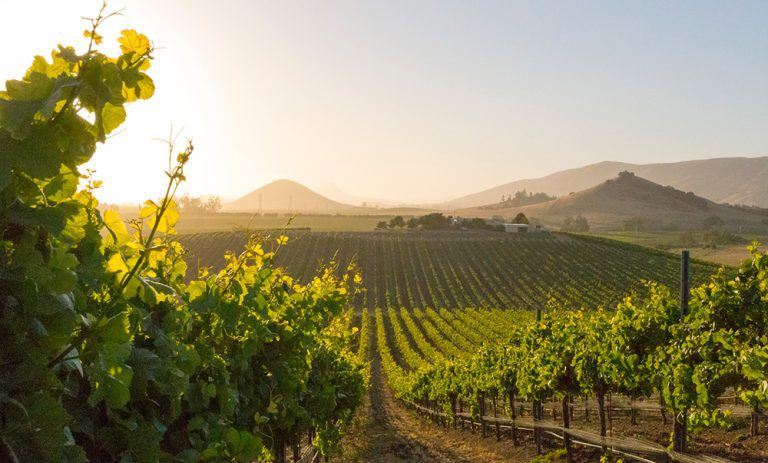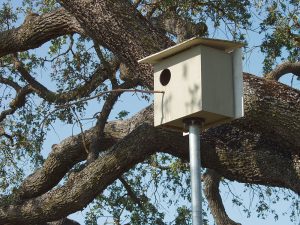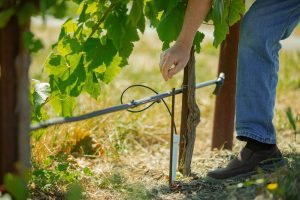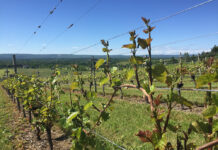
If you have devoted time to a home garden, you have experienced the frustration of managing weeds, insect pests, rodents and plant diseases.
Pests can cause so much damage to your months of hard work that you have to discard a sizable portion of your harvest, or even remove plants completely. They damage your precious produce, steal resources like water and nutrients, bore into plants and accelerate decay, and spread disease. To a commercial farmer, damages like these can devastate their business.
Each year, 20% to 40% of global crop production is lost to pests, costing nearly $300 billion (FAO 2019). Damages of this magnitude divert human and economic resources and compromise our food supply.
So then, what is a grower to do when they find their crop has become home to pests?
They implement an informed and tailored approach to manage their farm’s unique and dynamic pest complex, one that lessens the damage and economic burdens brought about by pests without causing harm to the ecosystem.
Managers of sustainably farmed vineyards value safe pest management strategies. They manage pests in ways that minimize economic damage to their crop, protect the environment, are safe for their workers and produce a quality end-product. This is achieved by implementing integrated pest management (IPM) strategies.
According to the United States Department of Agriculture, IPM is “a science-based decision-making process that combines tools and strategies to identify and manage pests.” This sustainable approach to pest management combines strategies from four different control categories: cultural, biological, mechanical/physical and chemical.
For an IPM strategy to be successful, a sustainable vineyard steward must have a broad knowledge of pests, their lifecycles and their habitats. With this knowledge, a vineyard manager can create a safe pest management strategy that makes the vineyard ecosystem less hospitable to pests in the first place.

Cultural Controls
Cultural controls aim to disrupt a pest’s habitat. This reduces a pest’s ability to establish themselves, reproduce and thrive.
Many winegrowers manage powdery mildew through cultural controls. Mildew thrives in dark, damp environments. Thinning leaves on vines improves airflow and light penetration through canopies, helping to reduce mildew pressure.
Biological Controls
Biological controls use the power of nature by encouraging natural predators and beneficial insects into the vineyard to help manage pests. You can see evidence of this practice in action from a distance at nearly any sustainably grown vineyard.
Barn owls are a common and effective form of biological control used in vineyards. Farms install owl boxes throughout their vines, giving birds the perfect viewing place to spot scurrying critters and raise the next generation of gopher-getters. It is a mutually beneficial relationship that provides owls with hunting and nesting grounds and gives growers an eco-friendly way to keep rodent populations down without relying on chemical rodenticides.
Mechanical/Physical Controls
Mechanical and physical controls are direct interventions between a pest and a crop. These tools include bird netting, rodent traps, deer and hog fencing, and mulching.
Covering the ground between vine rows with a mulch material like yard waste, wood chips, straw or hay is an effective way to reduce weed pressure. The mulching blocks out light, and without light, weed seeds cannot germinate. This practice has additional benefits of reducing soil erosion, preserving soil moisture, insulating the soil from extreme heat and cold, and increasing soil organic matter.


Chemical Control
While chemical intervention can be necessary, sustainable vineyard stewards explore this option once the other three methods have been used. The selection and application of pesticides are done in ways that minimize possible harm to people and the environment. This means choosing safer active ingredients that don’t contaminate air, soil and water, or pose threats to humans or non-target organisms. When a sustainable grower makes targeted applications, they minimize the treated area and ensure only appropriate areas are treated.
Compounding Benefits
Because sustainable farming is holistic, growers often find that one good practice has an unexpected positive impact on another resource. This was the case for Jean-Pierre Wolff, owner of SIP Certified Wolff Vineyards in San Luis Obispo, Calif.
A cultural modification intended to reduce his irrigation needs turned out to have what he calls an “indirectly obvious” benefit: less pressure from weeds and vertebrate pests.
While redeveloping a portion of his vineyard in 2017, Jean-Pierre Wolff decided to convert to drought-resistant rootstocks. And then he did something novel: He planted them three feet into the ground.
Since a standard drip irrigation system wouldn’t be able to efficiently hydrate the deep roots, he needed to develop a system that would.
Deriving inspiration from an African palm farming technique that utilizes bamboo sticks and coke bottles for irrigation, Wolff placed PVC pipes vertically into the ground at the depth of each rootstock. Through these PVC pipes, water and fertilizer are delivered directly to the rootzone.
He compares this system to an IV. In a traditional drip irrigation system, water and fertilizer need to move through multiple layers of soil before reaching the roots. With this direct delivery method, nothing is wasted in the parts of the soil that contain no roots.
This innovative subsurface irrigation technique achieved Wolff’s original goal of reducing the amount of water required to irrigate the vines by 30% to 50%.
It also reduced the pressure of native and noxious weeds in his vineyard.
Since many weeds have shallow roots, they cannot reach the water and fertilizer that are applied three feet under the ground’s surface. This cultural practice created an environment where weeds can’t access the resources they need to securely establish themselves, and therefore cannot thrive.
Vertebrate pests have also had little success establishing themselves in the blocks of deeply planted vines. Since many rodents do not regularly dig to these depths, the subsurface irrigated blocks see far less damage. Much of a plant’s vitality relies on its root system. Root damage caused by rodents can cause lower yields and outright vine death.
Safe pest management strategies offer growers a variety of tools to help them manage complex pest issues. Wolff’s story is just one example of how sustainable winegrowers take a mindful approach to combat dynamic pest concerns in eco-friendly ways.
With heightened awareness about the environmental and social impacts of conventional agriculture, it’s no surprise 85% of global consumers have become “greener” in their purchasing decisions (Simon-Kucher & Partners 2021).
If you’re not sharing the story of your sustainably minded business, now is the time to start. Help the growing number of eco-conscious consumers choose your products by letting them know they are produced in environmentally responsible ways.
Telling your sustainable story makes your business stand out for not only recognizing the health and resource issues currently being faced but acting to address them.
Want to hear more stories about how sustainable winegrowers and winemakers are raising the bar? Next time, we’ll share the story of how an estate vineyard and winery in Arroyo Grande, Calif. made many small changes around their property that compounded to have a massive impact on their overall energy use.






